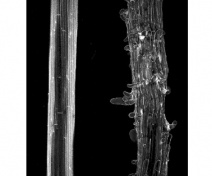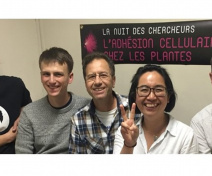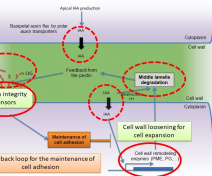The plant cell wall consists mainly of a complex network of polysaccharides. It plays a fundamental role in the growth, development and interaction with the abiotic and biotic environment of the plant.
Despite their importance, the mechanisms of biosynthesis, transport, deposition and maturation of these polymers are still very poorly understood. Furthermore, the impact of polymer modifications on the mechanical properties of the wall and in particular the control of cell adhesion remains to be elucidated. In order to better understand these processes we combine molecular genetic, biochemical and cytological approaches using as model plants the Arabidopsis thaliana, but also cultivated species such as rice and tomato.
Biological Question
Maintaining a correct cohesion between cell is of major importance in many aspect of plant morphogenesis. Our recent work using genetic and chemical genomic approach did show that cell adhesion is probably tightly control during plant development. The aim of our group is to identified the key events involved in the control of the cell adhesion. The maintenance of cell adhesion appears as a complex process through various mechanisms
Models, tools and methods
Using genetic and chemical genomic approaches we are identifying various steps and mechanism involved in the control of cell adhesion including: cell wall quality control, signal transduction pathway, hormonal and post-translational/transcriptional regulation. Our current model is the dark-grown hypocotyl of Arabidopsis and the glandular trichome of tomato.
Societal and economical impacts

Leader:
Gregory Mouille




